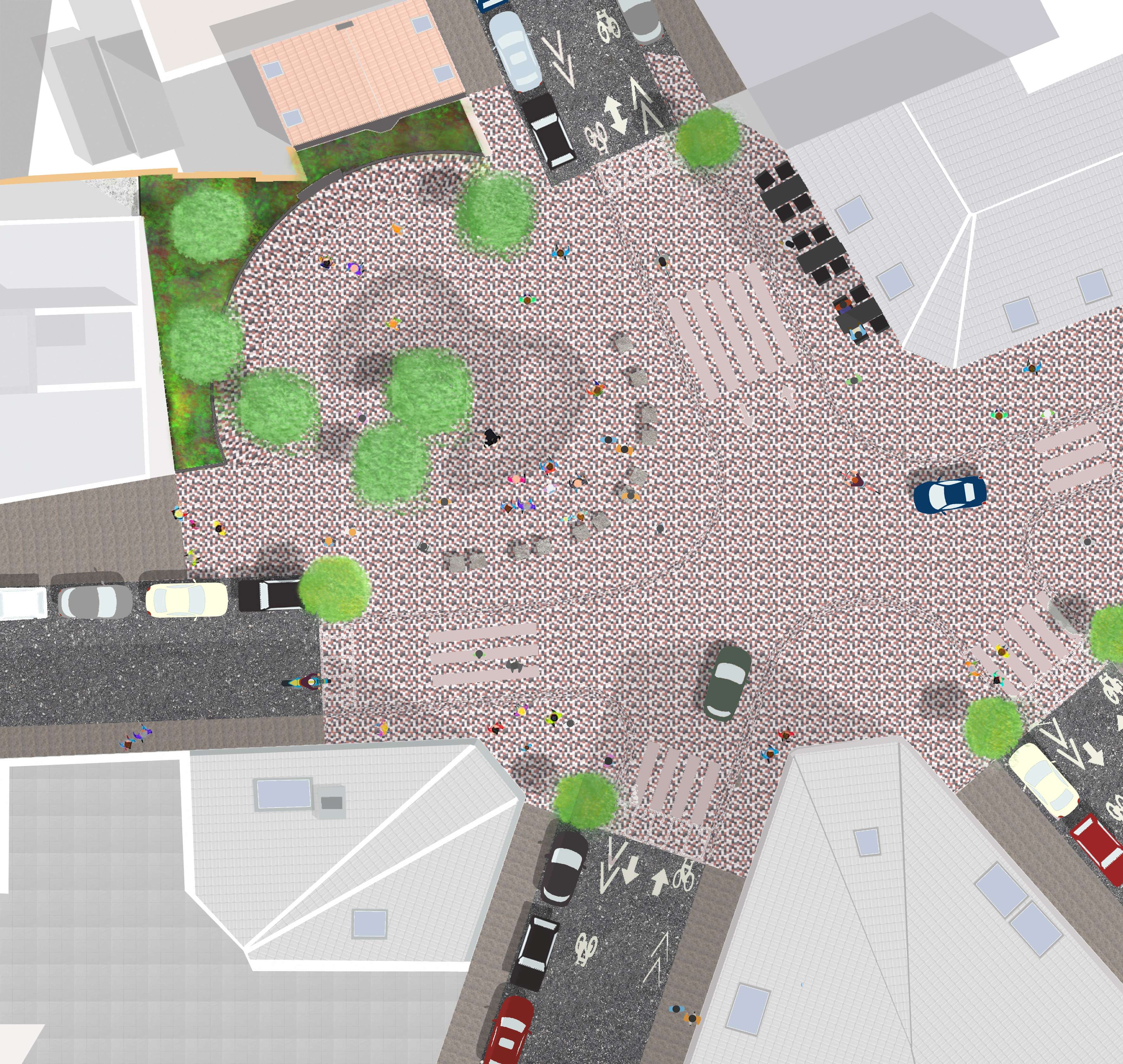
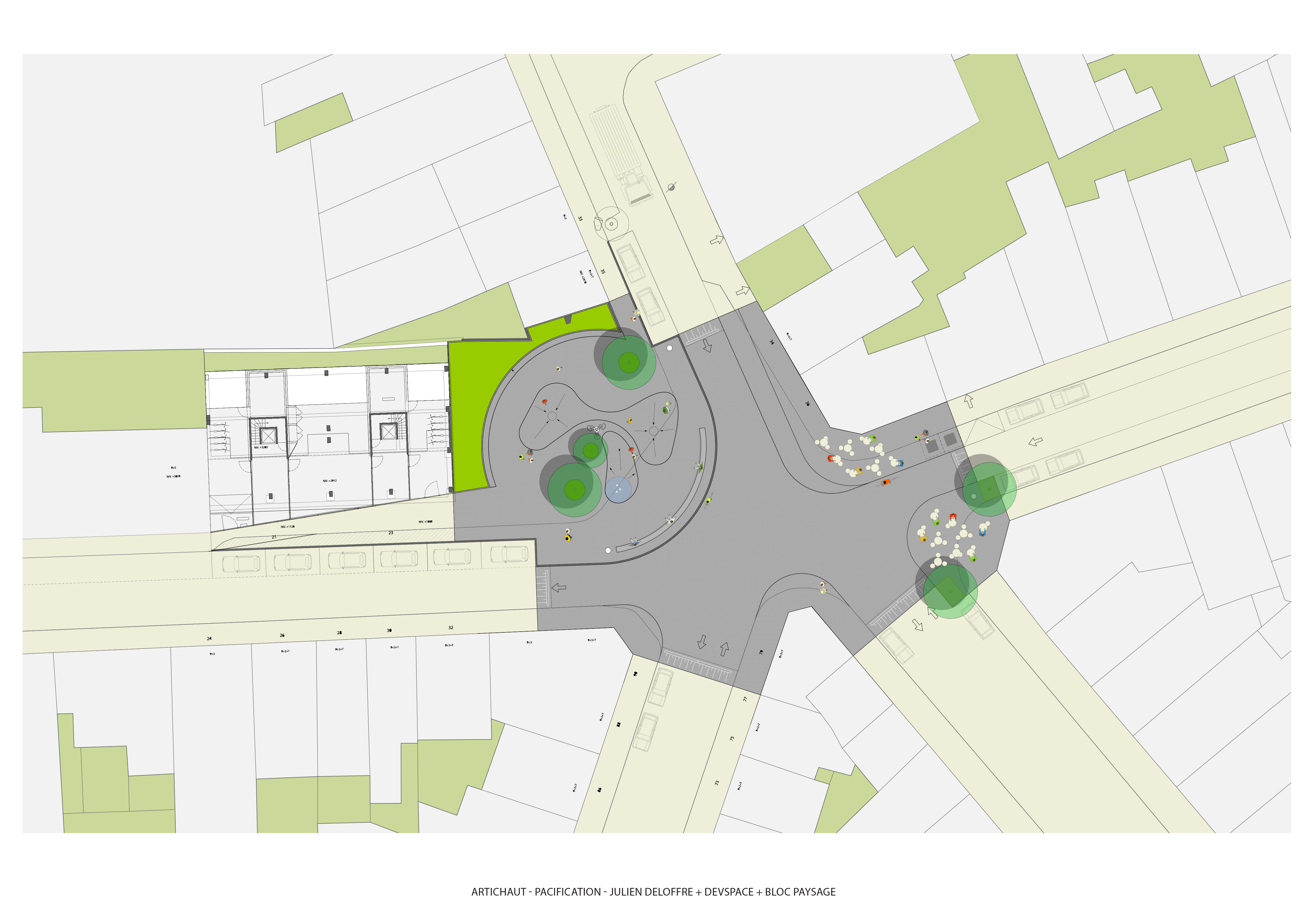


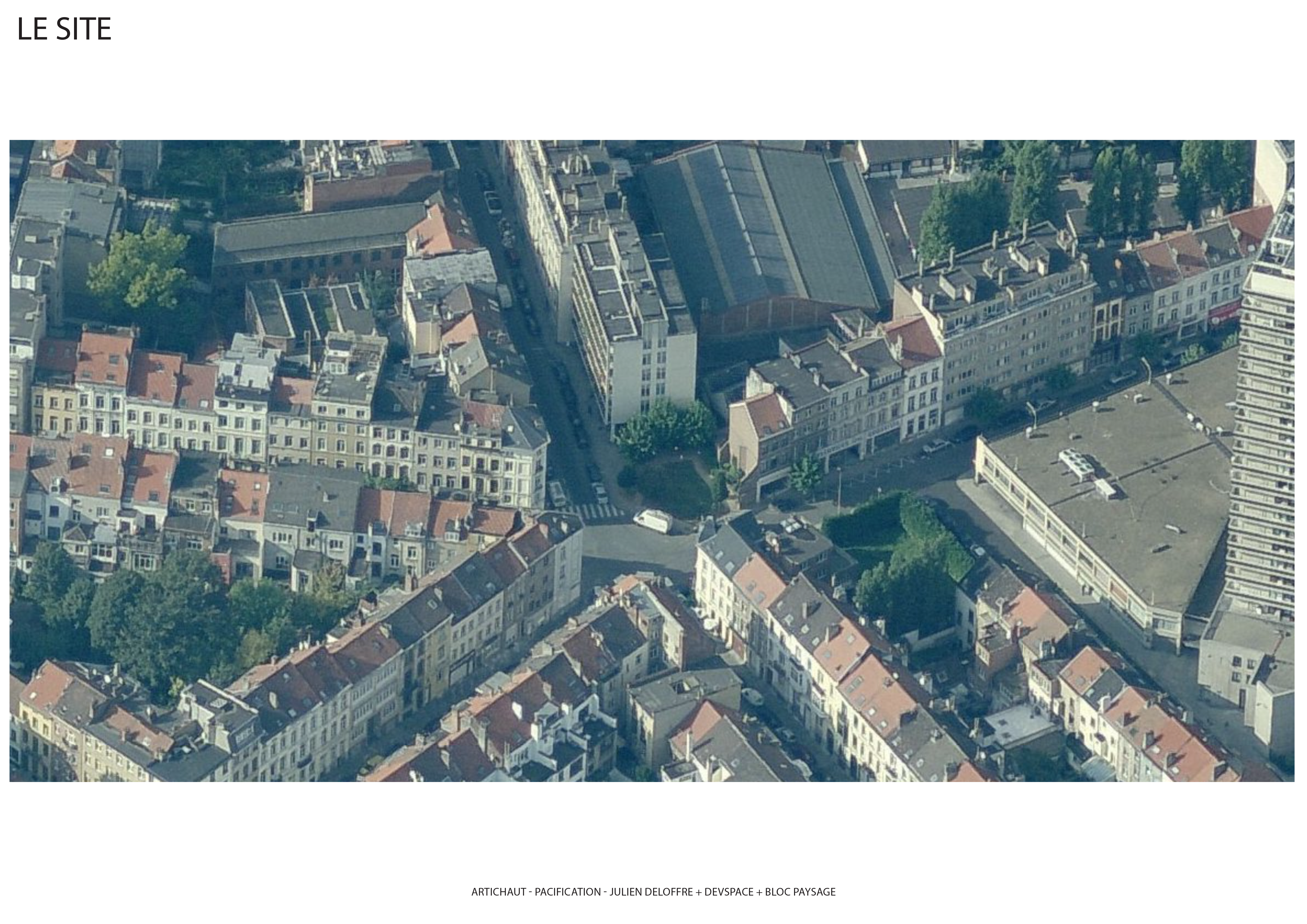
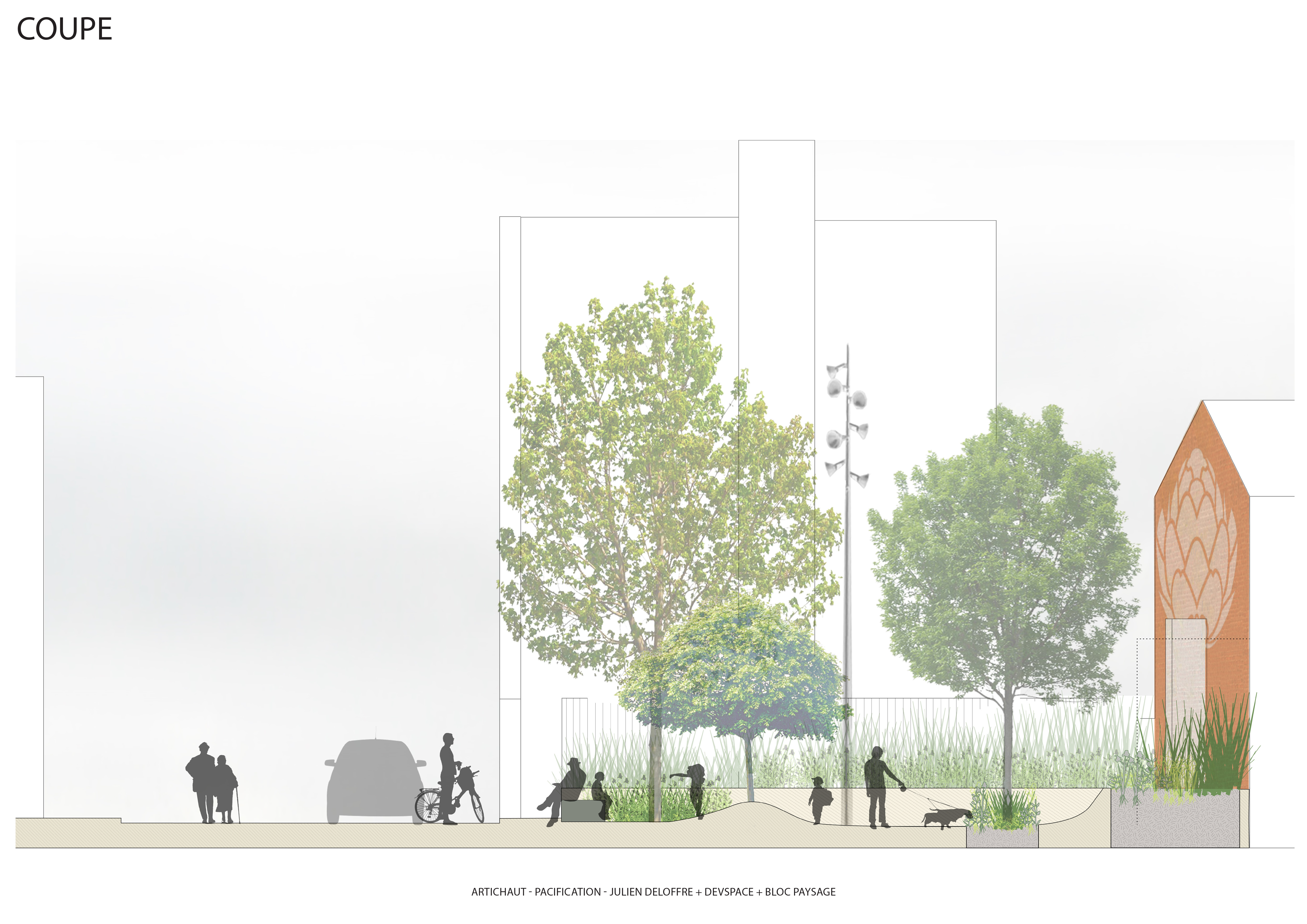
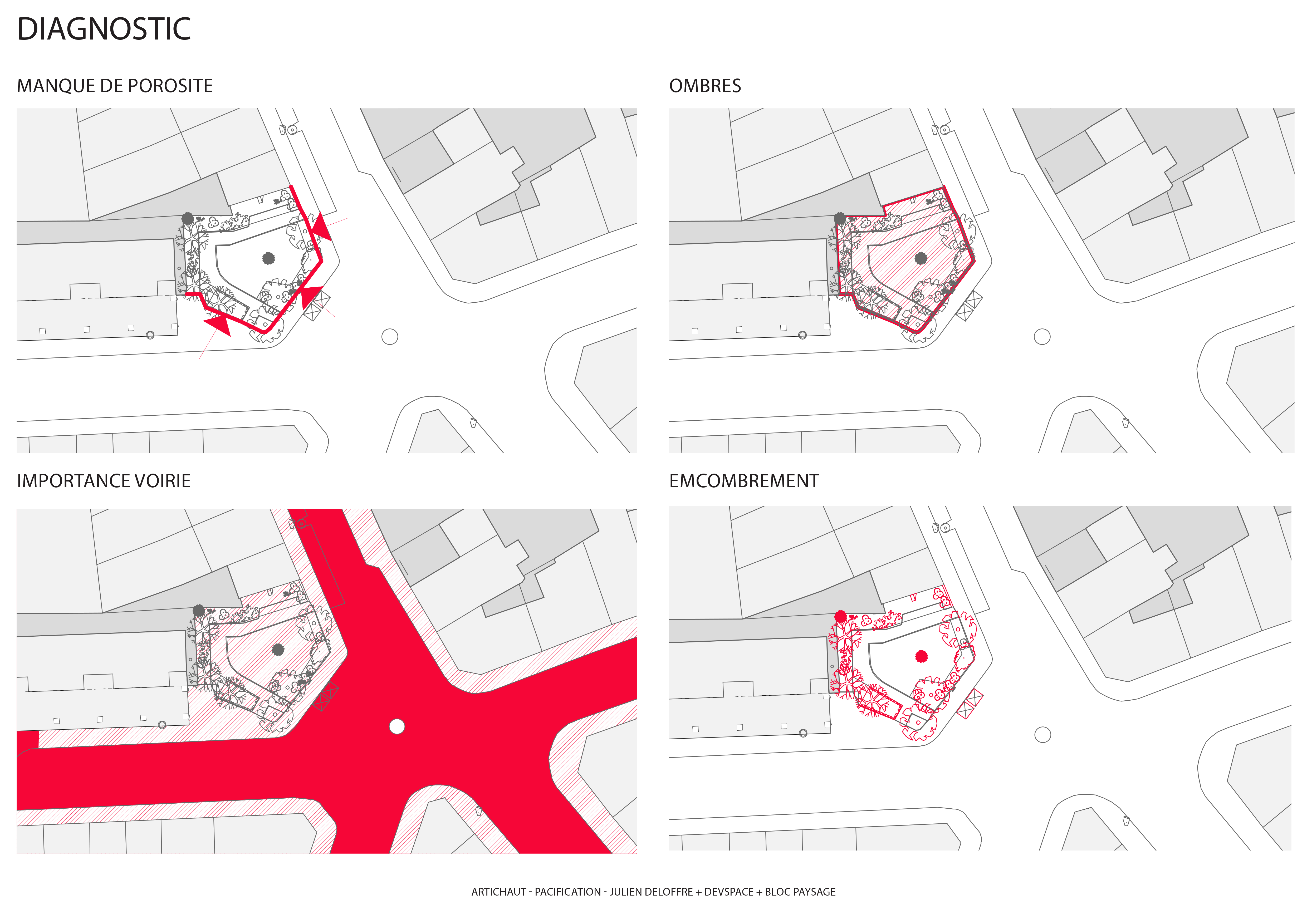
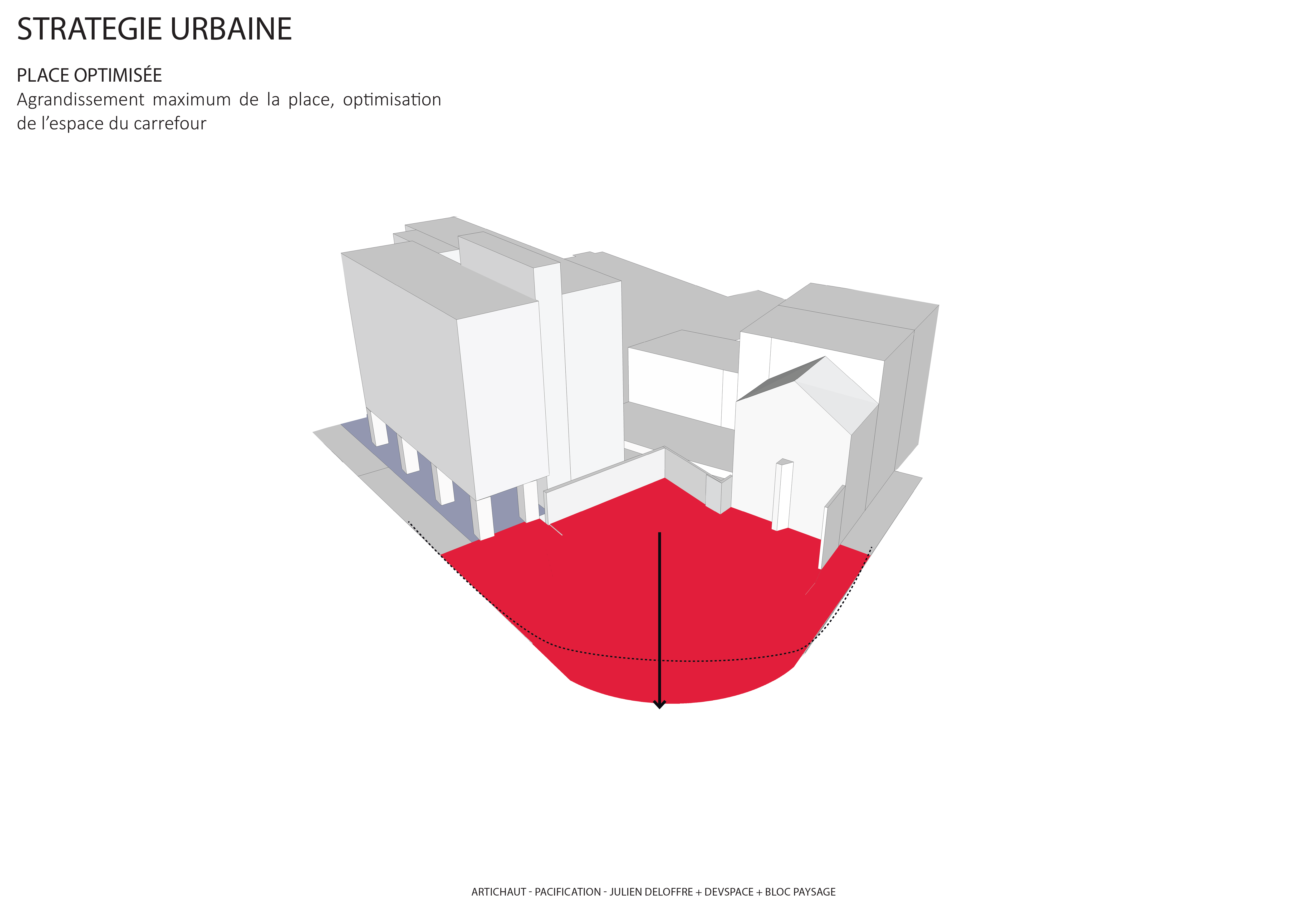
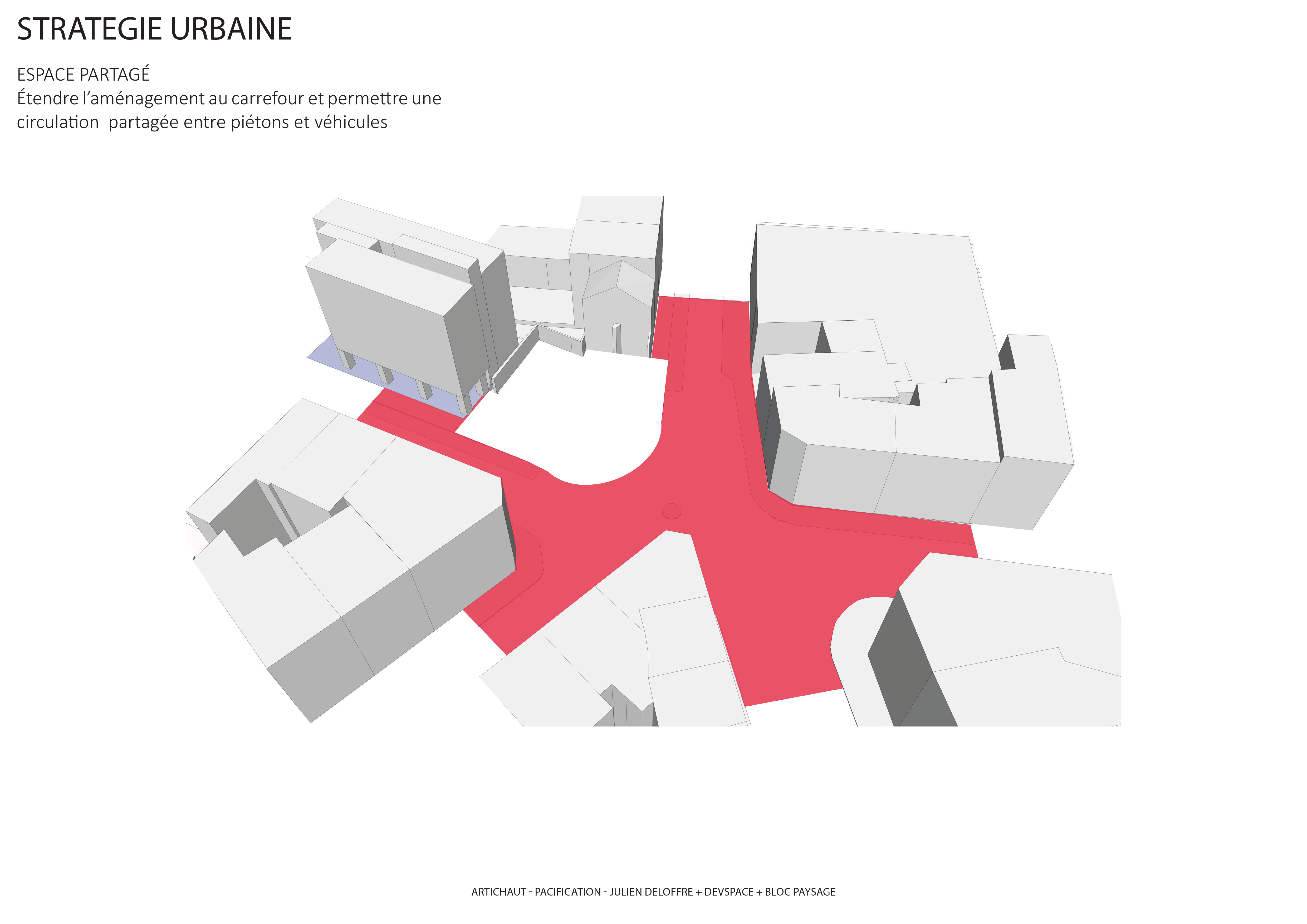

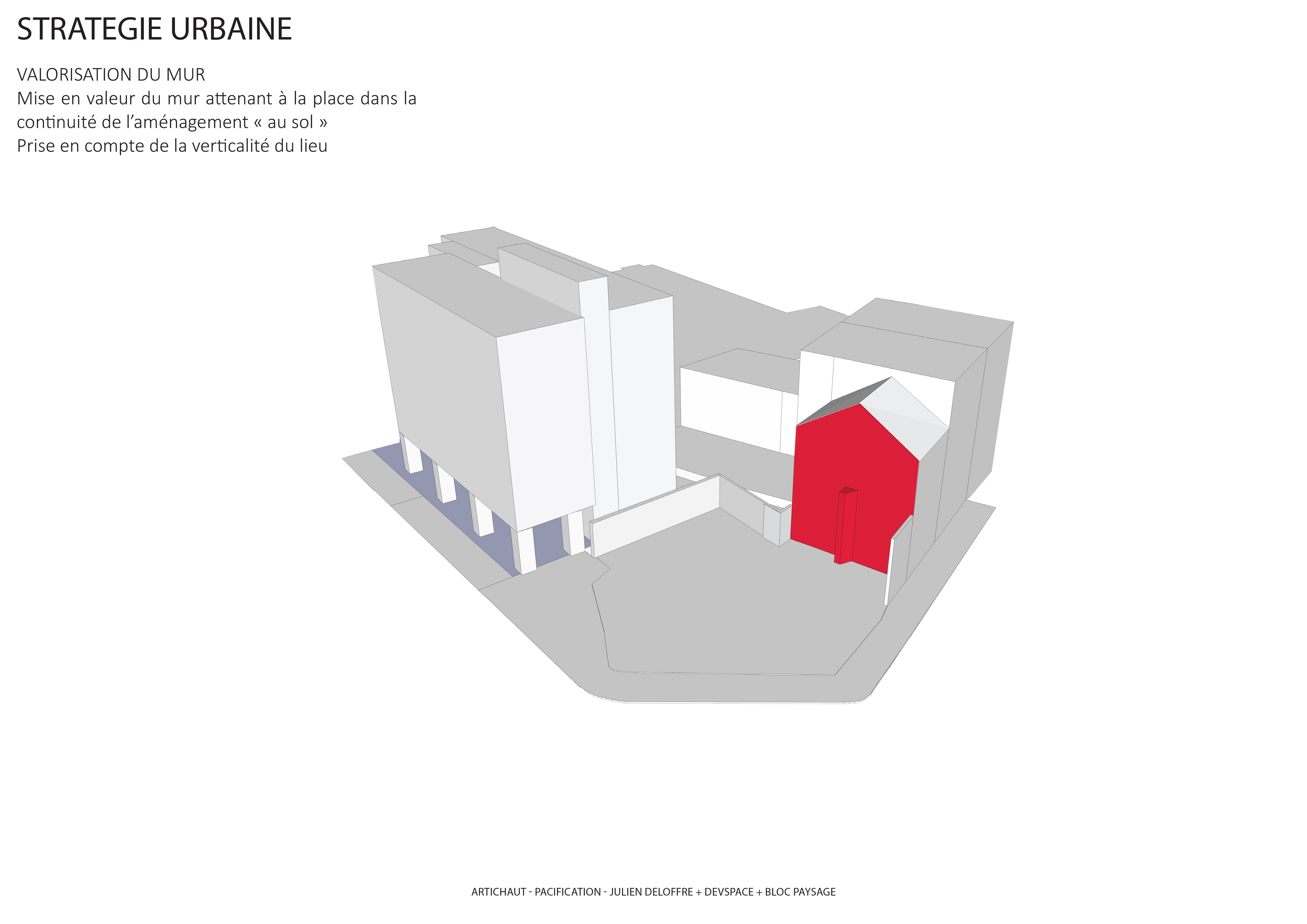

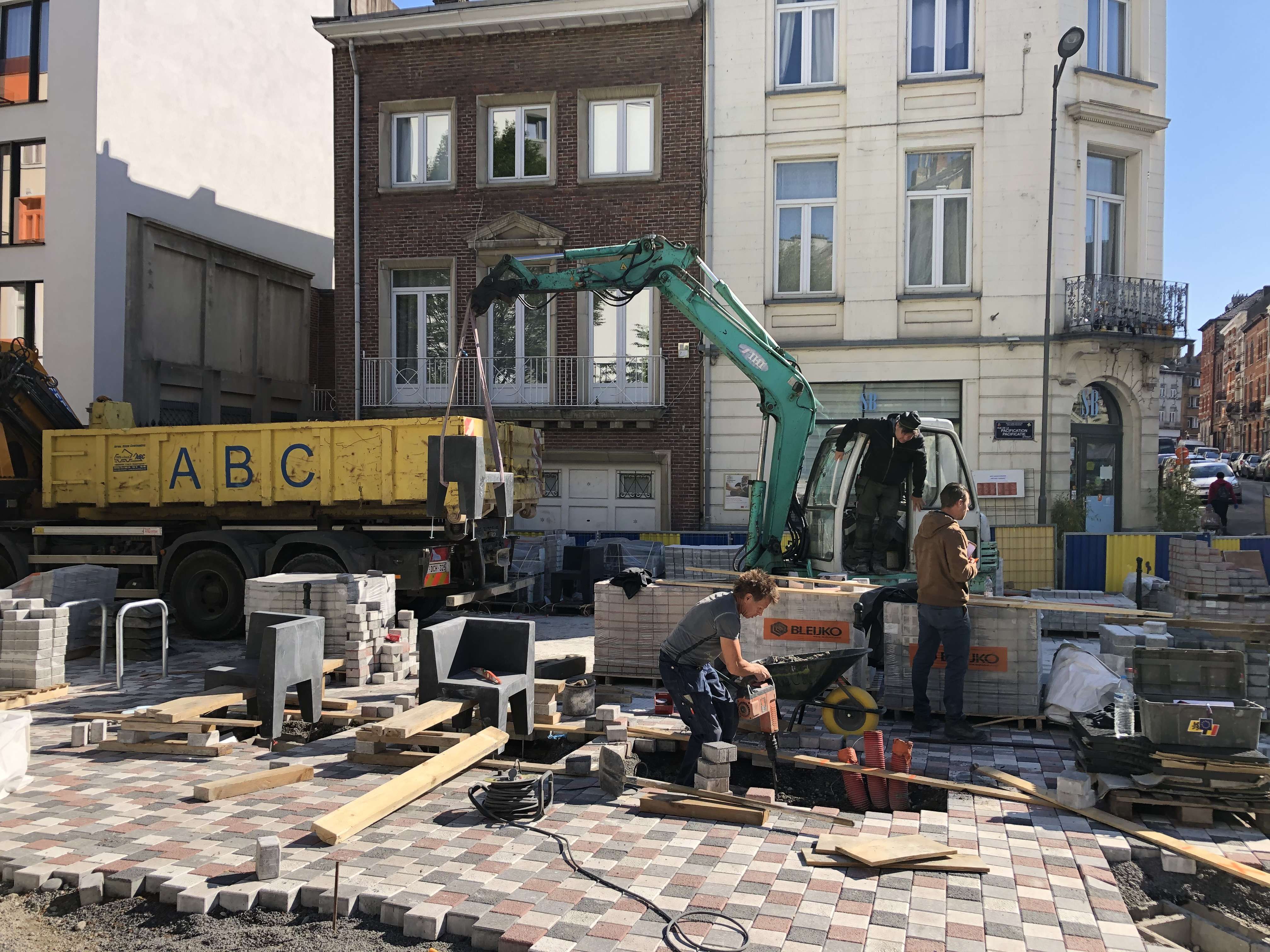
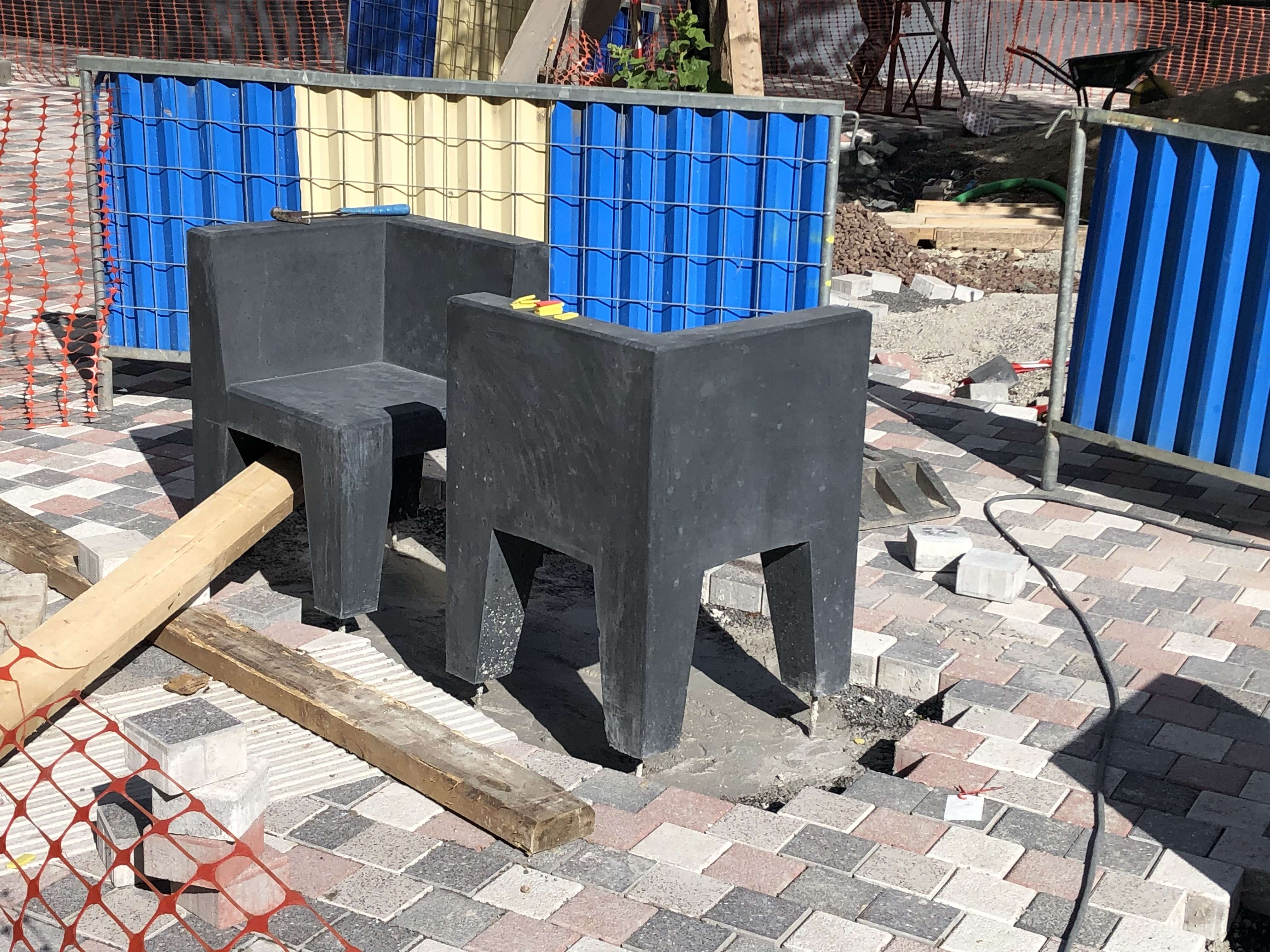

Artichaut
Artichaut
Previous state :
Brussels is strongly marked by the presence of cars. The major roads segment the city and constitute physical barriers, leaving small space for pedestrians and cyclists. Road and parking infrastructures dedicated to cars still occupied 70% of public space in 2015 (Brussels Environnement, mobility in Brussels – Figure, 16/06/2015).
The previous situation of the Guy Cudell square is a perfect example of the importance given to the car in the city's public space.
The project is located in a highly densified area near the city center of Brussels, in the municipality of Saint-Josse-Ten-Noode. Between the European Commission district and major roads of the city, the square is established on a small local scale. Mainly used by a local population, traffic is quite low. However, this intersection of five streets is designed as a residual car oriented space with wide roads and narrow spaces dedicated to pedestrians and cyclists.
The imbalance between the daily use of crossroad’s space and its design is a common problem in Brussels.
Aim of the intervention :
In Brussels, policies to reduce the impact of cars continue to increase with the banning of the most polluting cars and the creation of a 30km/h zone in the city center. But the desire to give space back to pedestrians and to privilege soft mobility has recently seen a new enthusiasm by local elected officials supported by citizens in recent years, and this for several reasons:
-Global warming and the need for freshness in recurring periods of heat waves, which leads to the replacement of impermeable, dark and asphalt surfaces with bright and porous plant areas
-The Covid-19 health crisis, which was able to radically reveal the reappropriation of the city by pedestrians and the spontaneous improvement in air quality during periods of confinement
-The development of the "15min city" concept and the return of local shops and amenities under the impetus of residents and consumers, allowing easy access to essential needs in now multifunctional neighborhoods
-Recent geopolitical conflicts which underline the risks of our excessive dependence on fossil fuels and which support the already established desires for a transition to soft modes of circulation and the use public transport
Description :
This urban project challenges the hierarchy between the space dedicated to the car and the pedestrian space to create a new square. The texture of the pavements is homogenized throughout the square in order to create a feeling of visual continuity, of a large carpet from facade to facade. The roads are raised to the level of the sidewalks and terraces are enlarged, reducing the proportion of space dedicated to car use. Motorists drive on the 'pedestrian ground' by adjusting their driving and speed accordingly. The square acts as the focal point for leisure activities, welcoming dense vegetation and semicircular benches around a topographic play and fountain as an informal playground for children. Innovative, fun and aesthetic, this layout becomes a new symbol of the district. The square is visible as one large space from all corners of the crossroads and guarantees the safety of the users.
The extension of sidewalks on the different corners of the square allows the installation of new terrasses for the existing cafes and restaurants, in order to reinforce the conviviality and ensure a more continuous presence on the public space.
Assessment :
The project was incredibly well received by the inhabitants with whom we had developed an active participatory process, integrating the needs of the various actors of the public space during the design. The municipality with whom the dialogue was sometimes difficult during the mission and who had to be convinced many times to follow us to the end on this project, was also satisfied and decided to renamed the public space Place Guy Cudell in homage to the former socialist mayor of Saint-Josse who lived in a neighboring house.
Today, to our great surprise, the place attracts a very large number of users. This is something we would never have imagined at the start of the project, when we first visited the site. It shows how much there was a real demand and expectation for a new public space in this district and it is obviously a huge satisfaction as an architect to see this.
